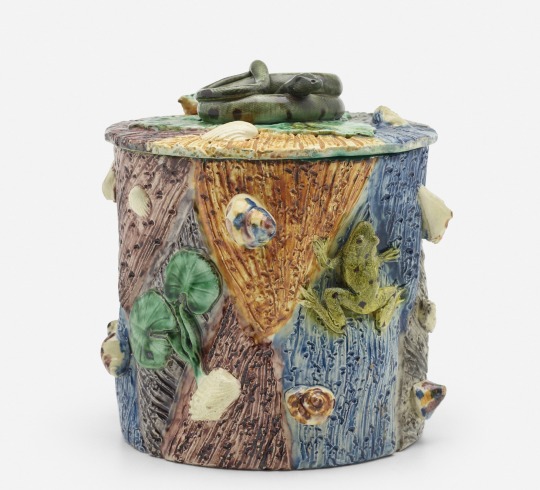#majolica ware
Photo
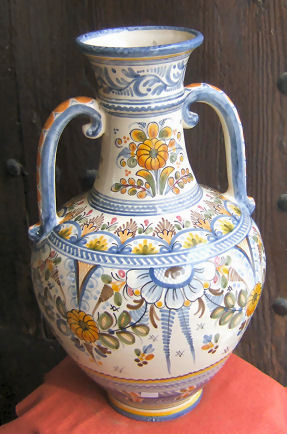
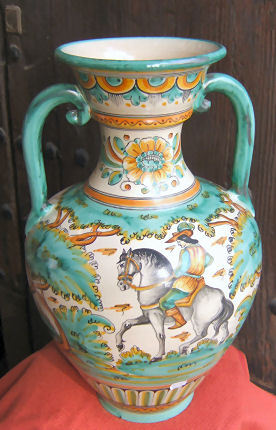
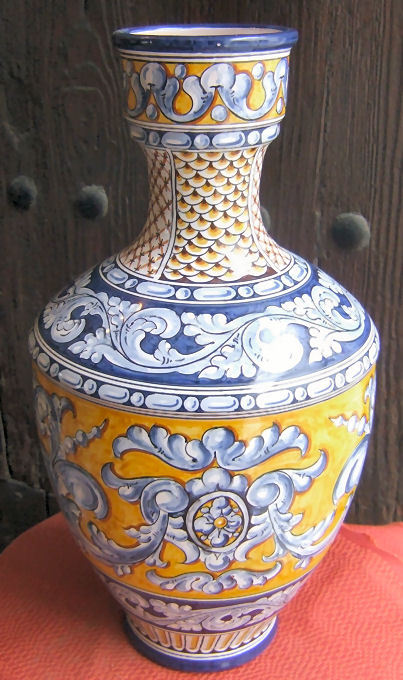
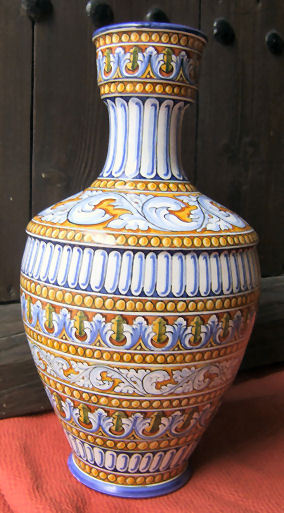
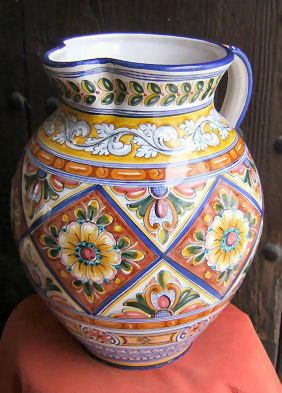

Hand-painted majolica ware (faience) vases, urns, jars, and jugs in traditional style from Toledo, Spain by the De la Cal Barreira family
#spanish design#faience ware#majolica ware#ceramic#jug#vase#urn#jar#de la cal barreira#traditional style
163 notes
·
View notes
Text
My urge to make a Bracket Poll is back... I still think it would be fun to do "favorite historical/archaeological Southwest US/Mexican Northwest Pottery" because I am gung-ho for Salado Polychrome and Tusayan Black-on-White and St. Johns Polychrome and Jeddito Yellow Ware and Ramos Polychrome and am thinking of going up to Sikyatki Revival Pottery (or maybe go up to modern-day styles too? because I looooooove the black-on-black made by a lot of Pueblo potters today. and the San Juan Revival movement of the 30s-60s is very pretty and cool. And modern Acoma pottery is gorgeoussss and what Jason Garcia is doing is brilliant. but then I'd have to decide about the inclusion of things like Spanish-Mexican Majolica/Talavera and Mata Ortiz/Pakimé) and I think it would be fun to do an unexpected bracket poll like that.
However I ALSO want to do a "favorite queer media from the 20th century" poll because I think that would also be fun
20 notes
·
View notes
Text
#ThreeForThursday:

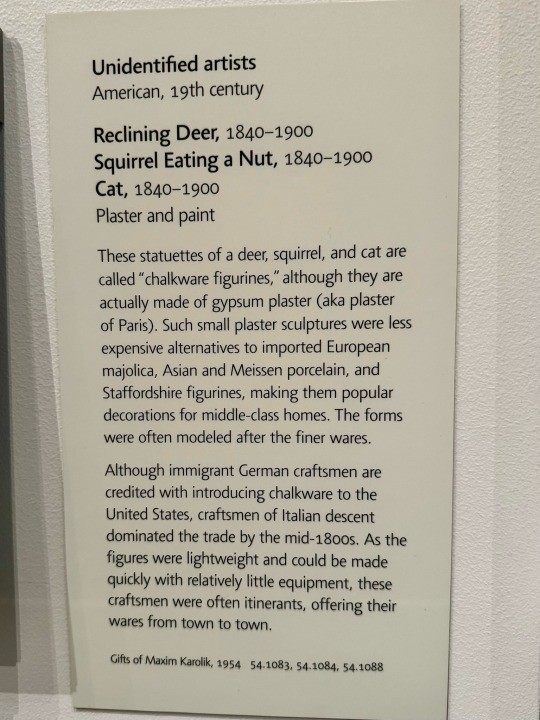
Unidentified American artists, c.1840-1900
1. Reclining Deer 13.65 x 11.11 cm (5 3/8 x 4 3/8 in.)
2. Squirrel Eating a Nut 16.19 x 9.21 cm (6 3/8 x 3 5/8 in.)
3. Cat 14.6 x 8.3 x 6.4 cm (5 3/4 x 3 1/4 x 2 1/2 in.)
Painted plaster (Chalkware)
Museum of Fine Arts, Boston display
“These statuettes of a deer, squirrel, and cat are called ‘chalkware figurines,’ although they are actually made of gypsum plaster (aka plaster of Paris). Such small plaster sculptures were less expensive alternatives to imported European majolica, Asian and Meissen porcelain, and Staffordshire figurines, making them popular decorations for middle-class homes. The forms were often modeled after the finer wares.
Although immigrant German craftsmen are credited with introducing chalkware to the United States, craftsmen of Italian descent dominated the trade by the mid-1800s. As the figures were lightweight and could be made quickly with relatively little equipment, these craftsmen were often itinerants, offering their wares from town to town.”
#animals in art#museum visit#19th century art#chalkware#figure#figurine#decorative arts#American art#folk art#deer#squirrel#cat#cats in art#trio#Three for Thursday#Museum of Fine Arts Boston
13 notes
·
View notes
Text
The Bracket!
Thank you to everyone who was interested and everyone who voted! You chose Tusayan (Sosi/Dogoszhi) and Mesa Verde to represent our black-on-whites, and Plain Smudged and Corrugated to represent our utility ware types! (I was not expecting such a plain smudged sweep - I love to see the enthusiasm!)
So, without any more ado, here is the Finalized Pottery Bracket!
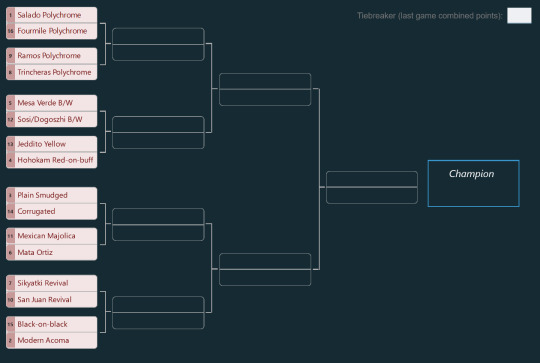
There are SO many more pottery types than these 16, and every time I go to a museum or search up on my favorite Southwest pottery reference websites (New Mexico Office of Archaeology's Pottery Typology Project and Northern Arizona University's American Southwest Virtual Museum) I am reminded of just HOW many different pottery styles there are and how I want to show all of them off...
But these sixteen cover a wide range of styles, locations, and time periods, and give a good sweep of pottery history of the Southwest!
Instead of being separated into seeds, they're grouped by theme. More details on each matchup below:
Tournament 1: Northern Polychromes. Salado Polychrome (that is, Roosevelt Red Ware, Pinto/Gila/Tonto polychrome) vs. Fourmile Polychrome (and the closely associate St. Johns Polychrome). Red, white, and black pottery made in Arizona and New Mexico.
Tournament 2: Southern Polychromes. Ramos Polychrome vs. Trincheras Polychrome. Red, black, purple, and cream pottery made in Chihuahua and Sonora.
Tournament 3: Triumphant Black-on-whites. The return of Mesa Verde Black-on-white and Sosi & Dogoszhi Black-on-white, going head to head!
Tournament 4: Yellow-ish wares. Ancestral Hopi Jeddito Yellow Ware (including the dramatic Sityatki Polychrome) from the Hopi Mesas of Arizona vs. Hohokam red-on-buff types (including Sacaton Red-on-buff and Santa Cruz Red-on-buff) from southern Arizona.
Tournament 5: Return of the Utility Wares. New corrugated and new plain smudged types, still mostly from the Mogollon region both, going to single elimination!
Tournament 6: Mexican Originals. Mexican Majolica, in its distinctively popular type Talavera, the brilliantly colored pottery from the Spanish colonial period in the 1600s, is primarily associated with Puebla, Mexico, which is rather far south of our US Southwest/Mexican Northest topic area, but has for centuries been a popular throughout Spanish-influenced Mexico and the US Southwest. Mata Ortiz, meanwhile, is a modern art pottery style developed in the 1960s in Chihuahua, taking inspiration from the archaeological pottery of Paquimé (including Ramos Polychrome).
Tournament 7: Pueblo Revivals. Sikyatki Revival is the name given to the style of Hopi pottery developed by the Hopi-Tewa potter Nampeyo in the late 1800s based on archaeological pottery from excavations at Sikyatki Village; vs. San Juan Revival, a pottery movement by potters of Ohkay Owingeh Pueblo (formerly known as San Juan Pueblo) starting in the 1930s.
Tournament 8: Modern Pueblo Art. Some of my personal favorite pottery styles picked out from many, many artists working in the Southwest today, Black-on-black (matte black on polished black, or vice versa) pottery developed in the 1910s by a San Ildefonso potter, and still popular primarily in Santa Clara and San Ildefonso Pueblos, vs. Modern Acoma Pottery, a distinctive style in bold reds, whites, and blacks that is just. Gorgeous. You'll see. (I don't mean to diss modern Hopi and Zuni and Navajo and everyone else's styles by not including them, because they're also beautiful and striking, but I had to stop somewhere!)
11 notes
·
View notes
Text


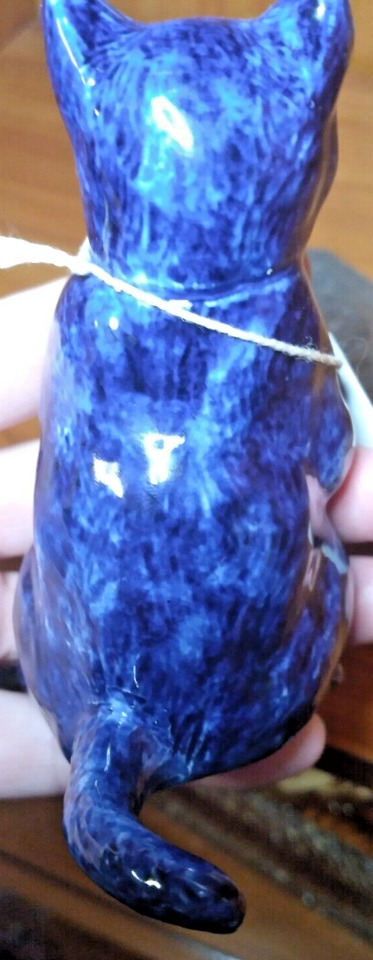
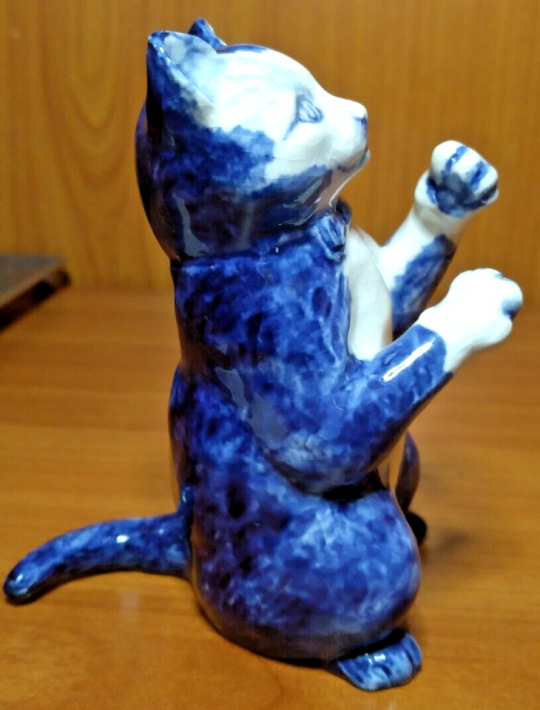



DELFT BLUE VICTORIAN CAT 'PLAYFUL' REVIVAL ART COMPANY ENGLAND 4" FAIENCE STYLE.FROM THE 1600'S TO THE PRESENT DAY CERAMIC ARTISTS HAVE USED THIS HAND PAINTED TECHNIQUE TO EMULATE THE FINE WHITE PORCELAINS OF CHINA AND JAPAN. EARLY BRITISH DELFT-TYPE WARES WERE VERY CLOSE IN STYLE TO THE CONTINENTAL MAJOLICA OR FAIENCE TYPE WARES.MADE IN U.K. HAND PAINTED. THE WHITE PAINT HAS NATURAL DESIGNED CRAZING AND THE BLUE IS SMOOTH.STOCK CODE: VPC/VSC/VCC.THE SCULPTURE COLLECTION. VICTORIAN CAT (DELFT STYLE). WEARING A CUTE BOW TIE.THIS CHARMING CAT IS INSPIRED FROM SCULPTURES AND PAINTINGS OF CATS THAT HAVE APPEARED THROUGHOUT HISTORY. THE CAT HAS ALWAYS BEEN A POPULAR IMAGE IN ART AND THIS HAND PAINTED BLUE AND WHITE CAT IS REMINISCENT OF THE VICTORIAN STYLE.+++ONE OF A DELIGHTFUL COLLECTION OF THREE--A SINGING CAT, A PLAYFUL CAT AND A CROUCHING CAT, THEY MAKE A MOST ATTRACTIVE SET.FREE SHIPPING. MEASUREMENTS IN DESCRIPTION. THANK YOU!#DAWNETTSEMPORIUM, #BEAUTIFULMERMAIDQUEEN, #SHAUNALYNNSFOOD.
6 notes
·
View notes
Link
Knuts and Bolts - Item of the Hour: 1880s Majolica Jumbo the Elephant promotional water jug. Extremely Rare Antique - From: Unbranded - Now Only: $400
0 notes
Text
The customer followed Madame Bosse past the shelves that were loaded with tin and lacquer boxes and bottles and jars of majolica ware, into a neat, modest parlour, where a tall window discreetly curtained with green serge looked onto a small courtyard. A pleasant fire burnt on the hearth, there was a table, some arm-chairs, a cabinet, and a cat, curled flat as a winkle just drawn from its shell, on a cushion.
-- Marjorie Bowen, The Poisoners (1936)
0 notes
Text
You've heard stories about legendary flea market finds—the rare pieces of art or heirloom jewelry that were purchased for a few bucks and fetched millions in resale. But what about flea market staples that are actually every day gems, often hidden in plain sight? They won't turn you into a millionaire overnight, but they're still worth a considerable chunk of change, making these items great investments—if you know what to seek out.
We asked designers about the housewares, furniture pieces, and decor items that are known to make frequent cameos at flea markets—and that can be worth a lot of money if they're in good condition. Ahead, 10 items the experts say are worth a second look whenever you’re shopping second-hand.
Tramp Art Pieces
AntiquesandFolkArt

AntiquesandFolkArt
A classic American craft, Tramp Art is a style of folk art that involves creating frames, boxes, and other decorative items using whatever found wood was available—often cigar boxes or shipping crates. Popular in the late 19th and early 20th century, "tramp art" got its name because of the (probably mistaken) belief that many of the people who practiced this craft were homeless wanderers.
More From House Beautiful

The ornate style of woodworking involves the meticulous carving and layering of found wood, or other utilitarian objects like nails and Popsicle sticks. At first glance, some of the ornate pieces could be mistaken as school art projects. But look closer and you’ll see these boxes, frames, and wall pockets are intricately notched and chipped. According to Avery Cox of Avery Cox Design in Austin, Texas, they're coveted icons of outsider art that have become increasingly difficult to find—which means you should absolutely snap a good one up if you see it.
When evaluating Tramp Art trinkets, Cox recommends looking at an item's level of complexity and material type to determine whether you've stumbled upon a valuable investment piece. (Carved wood is valued higher than those aforementioned Popsicle sticks.) Tramp Art can easily be worth several hundred dollars, but you might become too attached to sell any examples you find. That's because they add character and warmth to a contemporary setting. As Cox says, "We love a Tramp Art box on a kitchen counter for holding things like tea or spices."
Majolica
Antique Portuguese Pottery Palissy Style Majolica Lobster Wall Dish Plate, 1900

Antique Portuguese Pottery Palissy Style Majolica Lobster Wall Dish Plate, 1900
Colorful, glazed earthenware characterized by three-dimensional flora and fauna, majolica is a centuries-old pottery practice that can feel playful when incorporated into design. (Think: A lustrous platter with a raised lobster or a sardine box with fish finials). Majolica is durable and strong, particularly the Palissy ware style introduced at the 1851 Great Exhibition in London and named for the French ceramicist Bernard Palissy. Today, platters can sell for $1,000 to $6,000 a piece, Cox says.
Victorian majolica gets its bright colors from a tin glaze that contains lead, so you won't want to use these for serving. Try hanging majolica pieces on walls where there’s not much space (think: above doorways; on narrow walls) or in a place where you can create a grouping if you're lucky enough to score a few of these eclectic pieces. "They also work very well on plate stands or mixed into a bookshelf or hutch," Cox says.
Pendleton Blankets and Throws
CalmCoolCollectedVin

CalmCoolCollectedVin
Beloved for 130 years, Pendleton blankets are comfy, wool classics with recognizable stripes and geometric patterns, often inspired by Native American designs. When shopping flea markets, look for the iconic Pendleton tag sewn onto the blanket to denote authentic pieces, says Karen Nepacena, owner and principal designer at Destination Eichler in the San Francisco Bay area.
While new Pendleton blankets cost $189 on up, the retail price of vintage Pendleton throws start around $150, with many blankets going for a few hundred dollars and some rare, vintage ones going for even more on resale sites. Among the most sought-after designs is the classic Glacier National Park Blanket featuring four simple lines in green, red, yellow and black, Nepacena says. "Pendleton has been creating blanket collections in honor of National Parks since the early 1900s. This particular design for Glacier National Park was the very first of its kind, which makes sourcing a vintage version even more special," she adds. "The simplicity of the stripe design is timeless and this blanket design fits great into any style home. After dry cleaning, these vintage blankets are great for sofas or folding across the bottom of the bed."
Plycraft Vintage Lounge Chair and Ottoman
1960s Mid-Century Modern Plycraft Eames Style Cha…

1960s Mid-Century Modern Plycraft Eames Style Cha…
The iconic mid-century modern living room staple, an Eames Lounge Chair and Ottoman is a $6,500 investment. Released in 1956 and inspired by English club chairs, the recliner's timeless design is meant to evoke the feel of a worn-in baseball mitt. While you're not likely find one of these mid-century mainstays lounging in a flea market, Nepacena says you could very well come across a similar style manufactured by the now-defunct company Plycraft at the time to mimic the Eames chair. Look for the manufacturer markings underneath the seat; the Plycraft pieces can still fetch a few thousand dollars. "Even if the upholstery is no longer in good shape, there are many furniture restorers that can help bring these pieces back to life," she says.
Gainey Ceramic Planters
FloridaModern

FloridaModern
What may look like a simple ceramic planter could be a very expensive one, especially if the marking "Gainey" is on the bottom, says Nepacena. The Southern California pottery brand suspended its ceramics manufacturing a decade ago after 60 years in business, but the glazed handcrafted planters remain in high demand, and, Nepacena says, can sell for hundreds of dollars per piece.
"Use them to plant a succulent grouping or to house an indoor plant such as a rubber plant or snake plants," she says. "They look great in any space, whether an apartment, balcony or inside the house."
Pyrex
VintageGlassFindsCo

VintageGlassFindsCo
From retro-kitsch butter trays to colorful mixing bowls, vintage Pyrex pieces are having a major moment with nostalgic collectors hunting down the brand they remember from grandma's kitchen. While a stray Pyrex bowl isn’t usually worth much on its own, full sets and sought-after patterns tend to be high in value.
Pink Daisy and Snowflake pieces, for example, were the first patterned dishes to be released using a new screen printing process in 1956. Today, they're among some of the most beloved patterns, with resale values of these pieces often over $100.
"Once you start with one piece, you will start to recognize the pattern in other shapes and sizes and over time can collect multiple to make a whole set," Nepacena says.
English Pine Dressers
Large 19th-Century English Country Pine Dresser
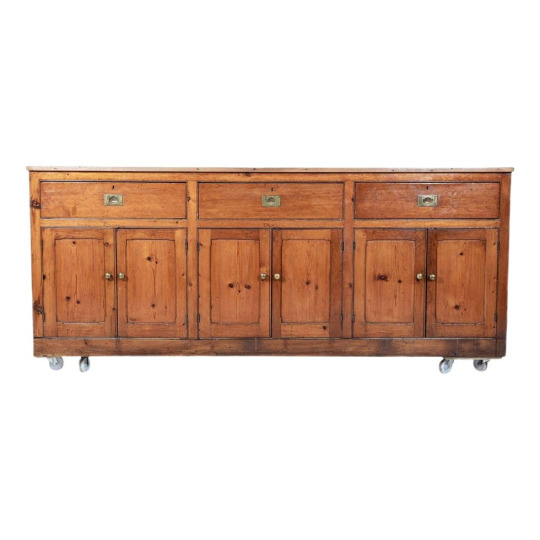
Large 19th-Century English Country Pine Dresser
Nineteenth-century dressers made out of English pine wood easily sell for $2,000. But you’ll often find these honey-toned pieces in the $500 range from people who don’t realize what they have, says Anastasia Casey, founder of IDCO Studio and Design Camp.
To gather details on a dresser, slide open the top drawer and look for a manufacturer's stamp, Casey says. Anything pre-1900's is likely too old to be stamped, but the older an item, the more it will be worth. If you find a drawer that's stuck, no worries! Casey suggests rubbing coconut oil or a bar of soap along the edge of the drawer for an easy fix.
Scandinavian Dining Chairs
Mid-Century Scandinavian Teak Dining Chairs - Set of 6
Mid-Century Scandinavian Teak Dining Chairs - Set of 6
While they come in a variety of styles, you'll recognize these for their classic Scandi minimalism and clean design. Modern ones in a set of eight or more are the most difficult to find, Casey says, so they'll hold the most value.
And you don't have to have a Scandi home to incorporate these gems into your own decor. "I love these dining chairs paired with something more traditional for a layered look," she says.
Travertine Furniture
thegoodsmn
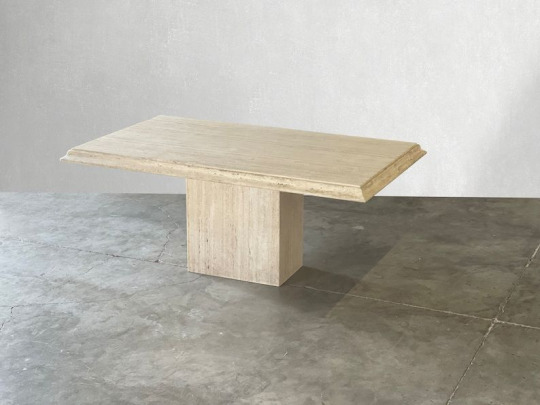
thegoodsmn
Famous examples of travertine can be found on the Colosseum in Rome or the Getty Center in Los Angeles. This slightly pitted limestone is formed by mineral deposits from natural springs, giving it a nice range of coloration, from creamy ivories to peachy pinks.
In the home, you're most likely to see this natural stone in a tile format. But travertine coffee tables, consoles, side tables, pedestals, and dining tables are hot items at vintage stores and flea markets these days, says interior stylist and vintage expert Leah Ashley.
Prices can be anywhere from a few thousand to tens of thousands depending on the size and quality of the piece, Ashley says. And provenance matters, too: The prices go up even more if an item is from Italy, so ask the dealer what they know about the origins of the piece.
Stoneware
Mid 19th Century Antique Stoneware Jug
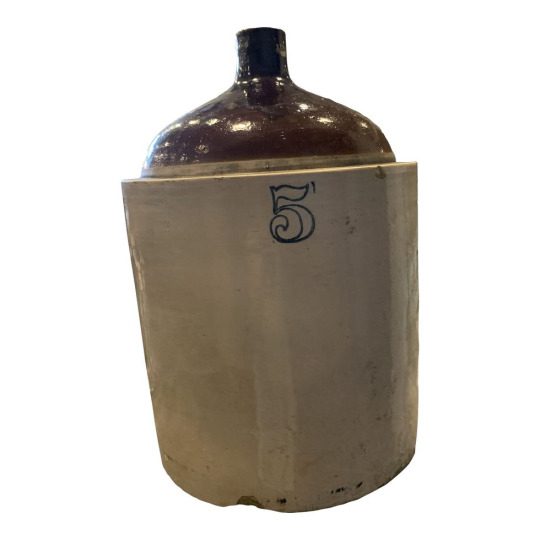
Mid 19th Century Antique Stoneware Jug
Stoneware is one of the most ancient forms of ceramics. To create stoneware, clay is fired at much higher temps than it is to make porcelain or earthenware. The end result is durable, utilitarian pieces like bowls, pitchers and crocks have lasted for generations, says Ashley. She thinks they're liable to last for many more, too: "I love to collect stoneware and display it on open shelving in my kitchen," she says.
Many stoneware pieces are highly collectible and valued at anywhere from $100 to $100,000. Generally, these pieces are stamped by the manufacturer, which can help you in an initial Google search to find out information on authenticity and value.
1 note
·
View note
Link
Check out this listing I just added to my Poshmark closet: Rare Antique 19th century Etruscan Majolica "basketweave" Plate 9 1/4"~.
0 notes
Text

From the foot of the Great Khan's throne a majolica pavement extended. Marco Polo, mute informant, spread out on it the samples of the wares he had brought back from his journeys to the ends of the empire: a helmet, a seashell, a coconut, a fan. Arranging the objects in a certain order on the black and white tiles, and occasionally shifting them with studied moves, the ambassador tried to depict for the monarch's eyes the vicissitudes of his travels, the conditions of the empire, the prerogatives of the distant provincial seats.
Kublai was a keen chess player; following Marco's movements, he observed that certain pieces implied or excluded the vicinity of other pieces and were shifted along certain lines. Ignoring the objects' variety of form, he could grasp the system of arranging one with respect to the others on the majolica floor. He thought: "If each city is like a game of chess, the day when I have learned the rules, I shall finally possess my empire, even if I shall never succeed in knowing all the cities it contains."
Actually, it was useless for Marco's speeches to employ all this bric-a-brac: a chessboard would have sufficed, with its specific pieces. To each piece, in turn, they could give an appropriate meaning: a knight could stand for a real horseman, or for a procession of coaches, an army on the march, an equestrian monument: a queen could be a lady looking down from her balcony, a fountain, a church with a pointed dome, a quince tree.
Returning from his last mission, Marco Polo found the Khan awaiting him, seated at a chessboard. With a gesture he invited the Venetian to sit opposite him and describe, with the help only of the chessmen, the cities he had visited. Marco did not lose heart. The Great Khan's chessmen were huge pieces of polished ivory: arranging on the board looming rooks and sulky knights, assembling swarms of pawns, drawing straight or oblique avenues like a queen's progress, Marco recreated the perspectives and the spaces of black and white cities on moonlit nights.
Contemplating these essential landscapes, Kublai reflected on the invisible order that sustains cities, on the rules that decreed how they rise, take shape and prosper, adapting themselves to the seasons, and then how they sadden and fall in ruins. At times he thought he was on the verge of discovering a coherent, harmonious system underlying the infinite deformities and discords, but no model could stand up to the comparison with the game of chess. Perhaps, instead of racking one's brain to suggest with the ivory pieces' scant help visions which were anyway destined to oblivion, it would suffice to play a game according to the rules, and to consider each successive state of the board as one of the countless forms that the system of forms assembles and destroys.
Now Kublai Khan no longer had to send Marco Polo on distant expeditions: he kept him playing endless games of chess. Knowledge of the empire was hidden in the pattern drawn by the angular shifts of the knight, by the diagonal passages opened by the bishop's incursions, by the lumbering, cautious tread of the king and the humble pawn, by the inexorable ups and downs of every game.
The Great Khan tried to concentrate on the game: but now it was the game's purpose that eluded him. Each game ends in a gain or a loss: but of what? What were the true stakes? At checkmate, beneath the foot of the king, knocked aside by the winner's hand, a black or a white square remains. By disembodying his conquests to reduce them to the essential, Kublai had arrived at the extreme operation: the definitive conquest, of which the empire's multiform treasures were only illusory envelopes. It was reduced to a square of planed wood: nothingness…
i've noticed myself idly dreading the day i will be finished with the book, calmly put it down, & be forced to part with marco and kublai. a natural consequence of spending a year+ reading this book in short, daily stints, i can only assume. i suspect this is part of the reason why my reading pace has slowed to a painful crawl of ~2-3 pages a week, wanting to give myself "more time", in some way... i am searching for a word too describe this nature. emotional? sentimental?
i am also noticing that i have stopped reading into these cities, little by little, stopped attempting to extract meaning from them except in cases where it's downright obvious (a city that panickedly renews itself each & every day, its junkyard of the past rapidly expanding in all directions like a grotesque monster from a lab, swallowing everything & only ever growing). i think i've just started accepting them for what they are, without very much examination at all.
0 notes
Photo

Tory Burch x Dodie Thayer Lettuce Ware 2019 reissue in green, pink and white
6K notes
·
View notes
Text
#antique made in japan#vintage made in japan#Maruhon ware#japanese majolica#antique japanese pitcher#pineapple pitcher#floral pitcher
0 notes
Photo
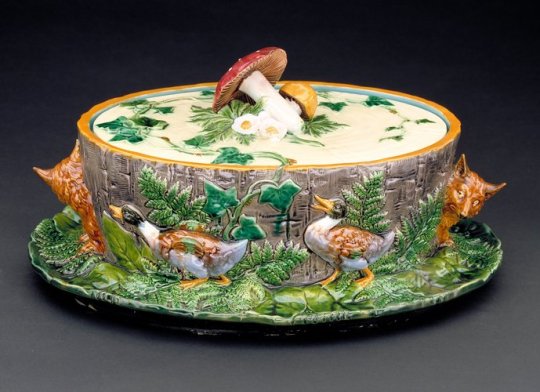
Game pie dish, Minton's Pottery and Porcelain Factory, 1877, Minneapolis Institute of Art: Decorative Arts, Textiles and Sculpture
lead-glazed earthenware called 'Majolica' in shape of oblong dish with leaf form flange at bottom, raise figures of foxes and ducks along sides; lid handle in the forn of a bunch of mushrooms, leaf and vine pattern on lid top; interior is turquoise, exterior is multicolor This whimsical, decorative serving dish was designed to complement a meal featuring wild game. A staple of Victorian households, this type of ceramic vessel was known as majolica ware, characterized by a dynamic blend of exuberant modeling and rich color glazes. Modeled as the stump of a tree, this game dish features naturalistic ducks and foxes set against leaves and ferns; a mushroom finial completes the playful illusion. Tureens such as these were sold with detachable ceramic liners in which pigeon pie or similar dishes were prepared or cooked. The majolica dishes themselves were intended only as ornamental serving dishes.
Size: 7 3/4 x 15 5/8 x 11 3/4 in. (19.69 x 39.69 x 29.85 cm)
Medium: Lead-glazed earthenware
https://collections.artsmia.org/art/3108/
154 notes
·
View notes
Photo

Chocolate Jar with Iron-locked Lid, Talavera Poblana, 1725, Art Institute of Chicago: Arts of the Americas
Talavera poblana, a tin-glazed earthenware, was made in the central Mexican town of Puebla beginning in the sixteenth-century. The name likely refers to the majolica-producing city of Talavera de la Reina in Spain. Talavera emulated the designs of fashionable imported Spanish ceramics; like its Spanish prototypes, it showed the influence of Islamic, Chinese, Italian, and French ceramics, all present in cosmopolitan Spain during the fifteenth and sixteenth centuries and transmitted to Mexico during the colonial period. This chocolate jar–with an iron cover, collar, and lock–would have been used to store valuable commodities like cacao beans. The blue-and-white ornamentation features panels composed of fringed curtains and scrolled leaves that frame long-tailed birds, a popular motif that may recall Chinese export Swatow ware. Gift of Eva Lewis in memory of her husband, Herbert Pickering Lewis
Size: 38.1 × 27.9 cm (15 × 11 in.) [h. 42.6 cm (16 3/4 in.) including key]
Medium: Tin-glazed earthenware
https://www.artic.edu/artworks/10703/
11 notes
·
View notes
Link
Knuts and Bolts - Item of the Hour: 1880s Majolica Jumbo the Elephant promotional water jug. Extremely Rare Antique - From: Unbranded - Now Only: $400
0 notes
